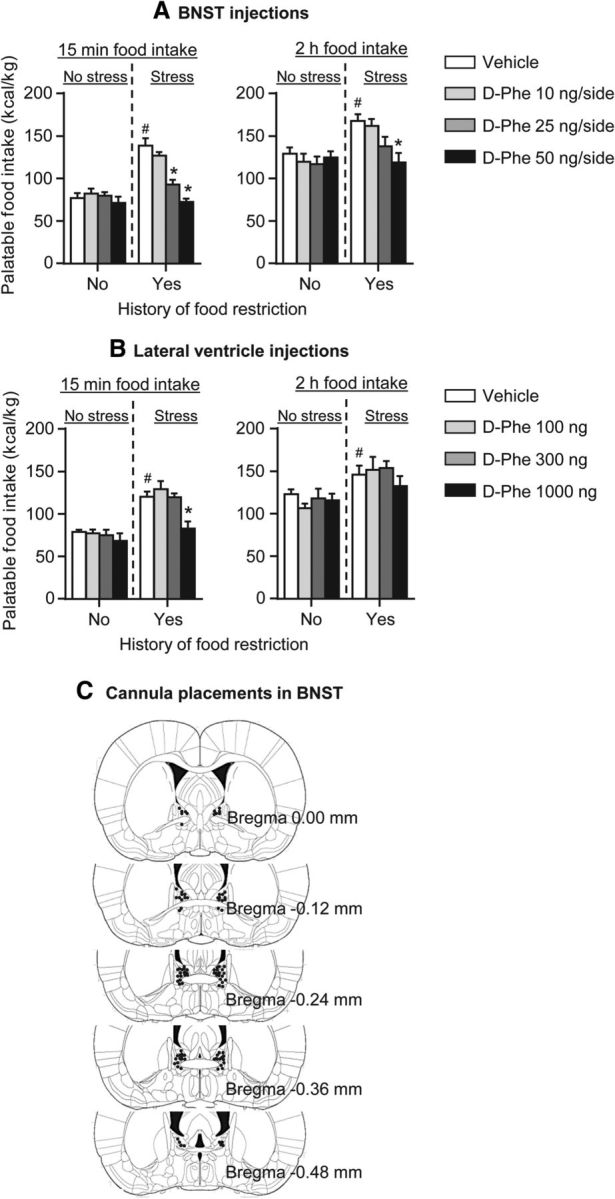Figure 4.

BNST and ventricular injections of the CRF receptor antagonist d-Phe-CRF(12–41) decreased frustration stress-induced binge eating in rats with a history of intermittent food restriction. A, BNST injections. Mean ± SEM palatable food intake (kilocalories per kilogram) during the first 15 min (left) and the total 2 h (right) test session. *p < 0.05, different from the vehicle condition; n = 6–8 per group. #p < 0.05, different from the vehicle no restriction plus no stress group. B, Lateral ventricle injections. Mean ± SEM palatable food intake (kilocalories per kilogram) during the first 15 min (left) and the total 2 h (right) test session. *p < 0.05, different from the vehicle condition; n = 6–8 per group. #p < 0.05, different from the vehicle no restriction plus no stress group. C, Approximate placements (millimeters from bregma) of injector tips in BNST of the 52 rats included in the statistical analysis (Paxinos and Watson, 2005).
